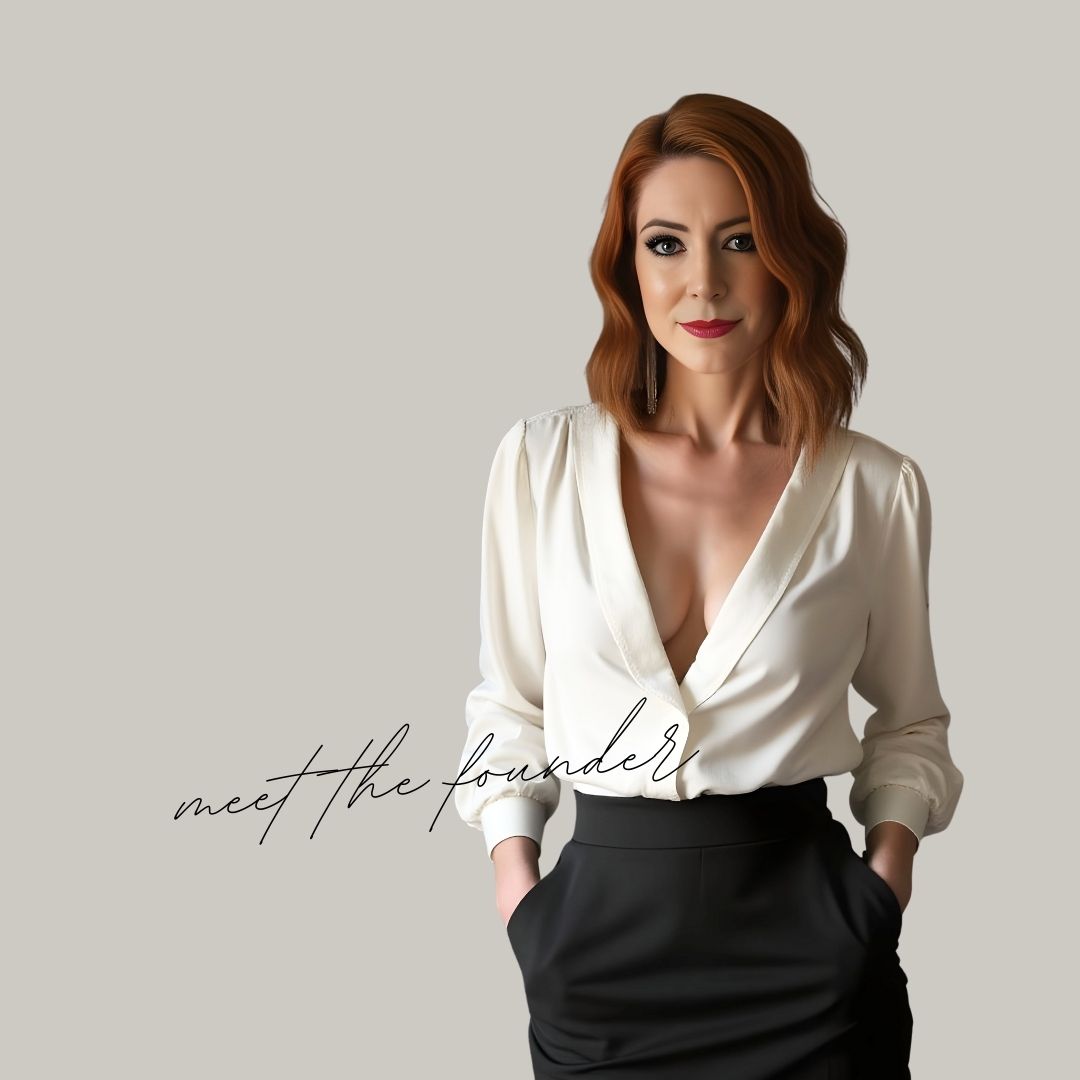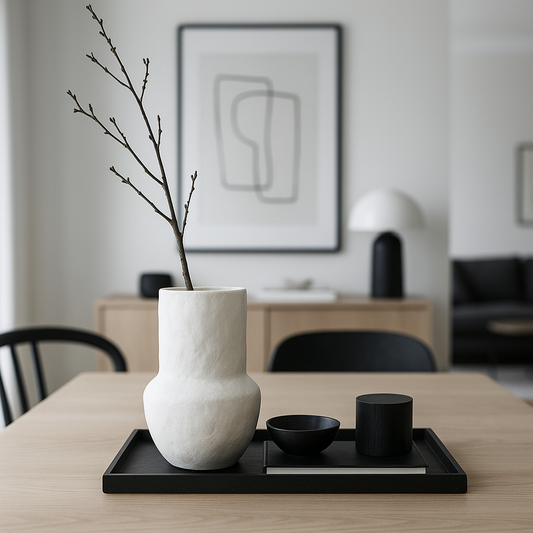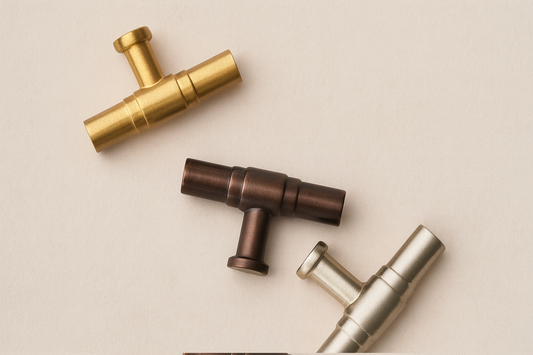2 Common Art-Hanging Mistakes That Instantly Cheapen Your Home (And How to Fix Them Fast)
Art can elevate a room… or completely throw it off.
At Mirra Interiors, we believe wall art should tell a story, create mood and add that designer touch to your home. Art isn't just for decoration—it’s a visual anchor. The right piece can set the tone, create flow, and give your space that elusive “finished” feel. But when it’s not done right? Even the most beautiful home can feel off-balance and underwhelming.
Whether you're sourcing art to finish off a new build, renting a modern apartment, or refreshing a single room, wall art should elevate your space—not cheapen it.
So, let’s talk about the two most common art-hanging mistakes we see again and again—and how to fix them effortlessly.

Mistake #1. Choosing Art That's Too Small
Tiny artwork, big wall? In the words of justin Beiber - Immediately no. This is one of the fastest ways to make your home feel underwhelming and… unfinished.
Why It Doesn’t Work
Small artwork on a large wall can make the entire space feel disconnected. It often looks like an afterthought, as if you grabbed something generic from a bargain bin and hoped it would “do the job.”
Instead of anchoring the room, tiny art pieces get lost, leaving vast, awkward negative space that throws off your entire layout. And while minimalism can be beautiful, minimal impact is not the same thing.
Visual Trick: Think of your wall as a canvas. A tiny dot in the middle? Not engaging. A bold brushstroke that spans the space? That’s impact.
The Fix: Go Bigger Than You Think
Here’s a secret from interior designers: bigger is (almost) always better. Oversized art instantly makes a room feel more luxurious, intentional, and balanced. It draws the eye, creates flow, and adds personality—even in compact spaces like Hallways or powder rooms.
When in Doubt, Follow This Formula:
- For walls above furniture: Your artwork (or combined gallery layout) should take up about ⅔ to ¾ the width of the furniture beneath it.
- For standalone walls: Aim to cover at least half the wall’s vertical space with the art, frame included.
What If You Already Own Small Art?
No need to toss it—just style it smarter:
- Create a gallery wall: Pair smaller pieces with others in similar tones or themes.
- Layer with mirrors or floating shelves: Add volume and visual weight.
- Use a large mat and oversized frame: It gives the illusion of a much larger piece.
Styling Tip: In tight spaces like powder rooms, hallways, or stairwells, oversized art can be surprisingly powerful. Don’t shy away just because the room is small.
Mistake #2. Hanging Art Too High
This one’s a classic. You step back to admire your new print… and suddenly it’s floating closer to the ceiling than eye level. We’ve all been there.
Why It Doesn’t Work
When artwork is hung too high, it:
- Breaks the visual connection between your walls and furniture
- Makes ceilings feel lower, not taller
- Forces the eye to look up, creating imbalance
- Leaves awkward dead space below the frame
In short? It feels off. And guests may not be able to fully appreciate the piece from where they’re sitting or standing.
The Fix: Use the Designer’s Rule of Thumb
Here’s the golden rule:
Hang the centre of your artwork at around 145–155 cm from the floor.
This range represents average eye level for most adults, creating a natural, grounded look that’s easier to connect with.

Hanging Art Above Furniture?
That rule still applies—with one small tweak. The artwork should sit:
- 15–20 cm above the top of the furniture (sofa, console, bedhead)
- Visually anchored to the piece below—not floating halfway up the wall
Quick Tip: If you're hanging multiple pieces, treat the entire arrangement as one unit. The centre of that combined unit should still land at around 145–155 cm.
Additional Tips for Hanging Your Art
1. Use Painter’s Tape First
Before hammering nails into the wall, use painter’s tape to outline the size of the artwork. This gives you a visual guide, helps with positioning, and prevents unnecessary holes or misalignment.
2. Scale to Your Wall Surface
A good rule of thumb is to scale your art to 60–75% of your wall surface area. Don't be afraid of going large—an oversized piece will always have more impact than a small frame floating on a big wall.
3. Follow the Two-Thirds Rule
When hanging art above a sofa or console, aim for artwork or grouped frames that measure two-thirds the width of the furniture below it. This keeps the display feeling proportionate and connected.
4. Space Multiple Frames Correctly
For gallery walls or collections, leave 7 to 15 cm between each piece. This spacing creates cohesion and helps avoid a cluttered or uneven look.
Mirra-Approved Art Hanging Checklist ✅
Before you put hammer to wall, ask yourself:
- Is the size right for the wall?
- Is it placed at eye level (145–155 cm)?
- Is it anchored to furniture below (if any)?
- Does the style match the mood of the room?
- Is there enough visual weight to balance the space?
If you’ve ticked all the boxes—you’re ready to hang like a pro.
Let Your Art Elevate Your Space (Literally and Aesthetically)
The right artwork, in the right size, at the right height? Game-changer.
And remember—bigger is often better, and lower is more luxe.
We’ve curated a collection of framed artwork and wall decor designed specifically for modern Australian interiors. From neutral palettes to bold abstracts, our pieces bring warmth, depth, and a designer finish to your home—without the guesswork.
Whether you’re after:
- Coastal calm
- Monochrome magic
- Mediterranean texture
… we’ve got a piece that works with your space—not against it.
Say goodbye to blank walls, awkward gaps, and underwhelming prints.
Shop modern wall art that actually fits, flatters, and finishes your space beautifully.
Final Thoughts
Art hanging isn’t just a finishing touch—it’s a design decision.
Get it right, and you’ll instantly elevate your space—no reno required.
Remember:
- Bigger is better.
- Lower is more luxe.
- Intentional beats random—every time.
And if you're still unsure? Let us help you. We offer styling advice, curated pairings, and art pieces you’ll love for years to come.























